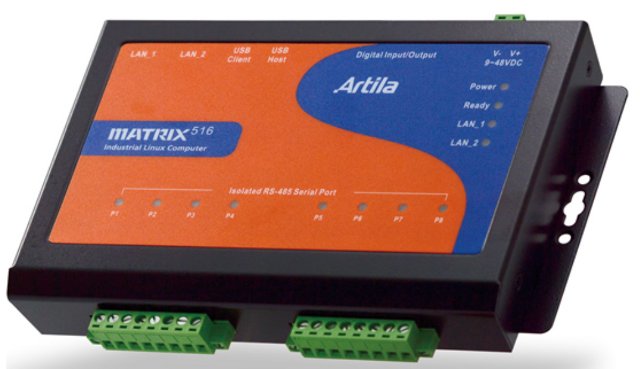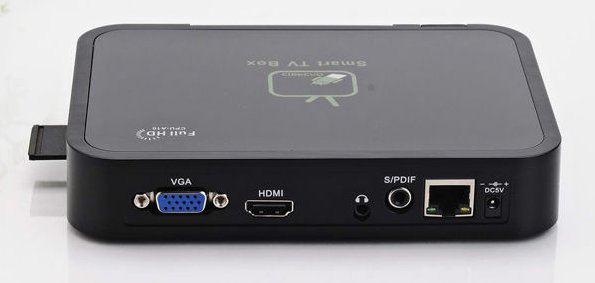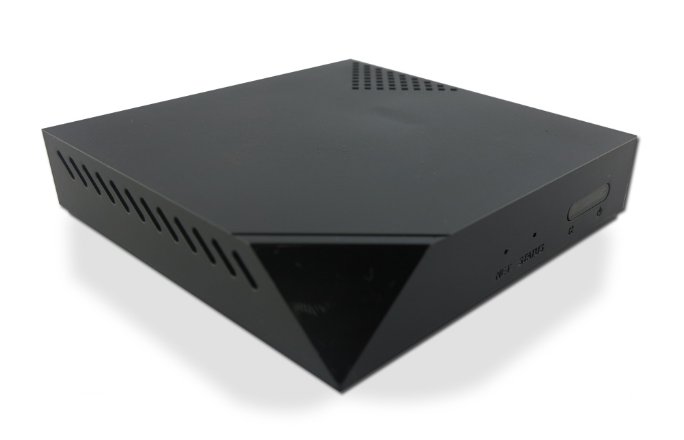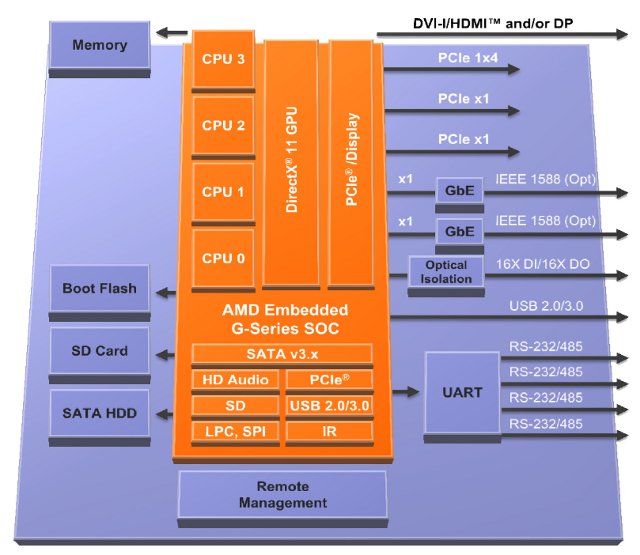Artila Matrix-516 is a Linux-based industrial computer powered by Atmel AT91SAM9G20 CPU (ARM9) with 64MB SDRAM and 128MB NAND Flash inside, and several I/O interface including 8 isolated RS-485 serial ports. This device targets industrial applications, including intelligent transportation system (ITS), building automation, energy-saving system, and factory automation. Here are the specifications of this industrial Linux computer: CPU – ATMEL AT91SAM9G20 w/MMU @ 400MHz System Memory – 64MB SDRAM Storage – 128MB NAND Flash + 2MB DataFlash for system backup (recovery boot) + micro SD socket (Up to 32 GB) Network Interface – 2 x 10/100BaseT, RJ-45 connector with 1.5KV magnetic isolation TTY(Serial) Ports 8 x isolated RS-485 (2500Vrms isolation). Connector: terminal block Baud Rate: up to 921.6Kbps Parity: None, Even, Odd, Mark, Space Data Bits: 5, 6, 7, 8 Stop Bit: 1, 1.5, 2 USB Ports – 2x USB Host Ports, 1x client port (reserved). Up to full-speed (12Mbps) […]
Linux 3.9 Release
Linus Torvalds has announced the release of Linux Kernel 3.9: So the last week was much quieter than the preceding ones, which makes me suspect that one reason -rc7 was bigger than I liked was that people were gaming the system and had timed some of their pull requests for just before the release, explaining why -rc7 was big enough that I didn’t actually want to do a final release last week. Please don’t do that. Anyway. Whatever the reason, this week has been very quiet, which makes me much more comfortable doing the final 3.9 release, so I guess the last -rc8 ended up working. Because not only aren’t there very many commits here, even the ones that made it really are tiny and not pretty obscure and not very interesting. Also, this obviously means that the merge window is open. I won’t be merging anything today, but if […]
Collaborative Comparison Table for HDMI TV Dongles
With so many HDMI TV dongles available on the market, wouldn’t it be nice if we could have a database to compare them all? The only issue is that it’s a lot of work to setup and maintain, so it’s unlikely one person is ready to spend his/her time entering such a lot of data. To work around this issue, and use the power of the crowd, Ian Morrison posted a link on Google+ mini PCs community to a “USB-dongle computers comparison table” powered by socialcompare.com where anybody can add or edit entries with the detailed specifications for each device I’ve given it a try and added GK802 / Hi802 mini PC. You’ll need to sign-in to Social compare, or simply use Facebook for login. You can then click on “+” icon, then enter the name of the device, and click on “Create an Item”, and a new column should […]
Yocto Project 1.4 “Dylan” Release
The Yocto Project Release 1.4 has just been announced. This release codenamed “Dylan” and based on Poky 9.0.0 is the sixth release of the project. The Yocto Project is a framework that creates embedded Linux distributions, and has been getting more and more traction with silicon vendors such as Intel, Freescale and Texas Instruments. Yocto Project 1.4 bring the following new features and updates: Major performance improvements – The overall build time has been reduced by more than 10%. Kernel build time is reduced by about 25%. With rm_work enabled, 40% less storage will be used for the tmp directory. Smart, a replacement for zypper Support for read-only rootfs Wayland support, an X replacement. Systemd support, a replacement for the system V init daemon. Usability improvements to HOB, bitbake, yocto-bsp and other tools, including UI improvements, new features and bug fixes. Documentation improvement/update and a new kernel development manual and […]
Linaro 13.04 Release With Linux Kernel 3.9 and Android 4.2.2
Linaro 13.04 has just been released. It features Linux Kernel 3.9-rc7 and Android 4.2.2. A lot of work has been done on ARMv8 (Cortex A53) with further work on OpenEmbedded, more testing, and updates to the GCC toolchain. Calxeda EnergyCore server has been added to LAVA, Origen Quad now gets hardware video acceleration in Android Jelly Bean. Still more cleanup has been done on the kernel side with regards to Samsung and ST SoC, and a big.LITTLE porting guide is now available (linaro login required). Here are the highlights of this release: LAVA Prototype of a new publishing system is used to overcome performance problems with android-build.linaro.org. Calxeda EnergyCore support is merged in LAVA, and an isolated system has been set up for web benchmarking. Fedora support is merged in LAVA. A user can submit LAVA jobs using a Fedora pre-built image. Boot commands are untangled from LAVA dispatcher. They’re now […]
GV-17 Android 4.2 Set-Top Box Features Allwinner A20 SoC, a 2.0MP Webcam
After Clousto A20 Media PC, and Mele A100 Dual, here’s another set-top box powered by AllWinner A20 dual core Cortex A7 SoC. GV-17 Android TV Box comes with 1GB RAM, 8GB Flash, and contrary to the other previous hardware also adds 2.0MP front camera. If you’ve heard about this model before, it’s because it’s an update of GV-17 set-top box based on AllWinner A10. GV-17 (A20) Specifications: SoC – AllWinner A20 dual core Cortex A7 + Mali-400MP2 GPU System Memory – 1GB RAM Storage – 8G NAND Flash + SD card slot Video Output – HDMI, composite and VGA Audio I/O – HDMI, stereo jack, and S/PDIF – Integrated MIC Video Codecs – MPEG-1/2,MPEG-4 ASP, DivX 3/4/5, H.263, H.264, XviD, VC-1, WMV Audio Codecs – MP3, WMA, WAV, OGG, FLAC, ALAC, APE, ACC-LC, ACC-HE, AC-3, DTS, Real Audio Connectivity: WiFi 802.11b/g/n (RALINK 8188) 10/100M Ethernet USB – 2x USB Host […]
100 Euros “Little Black Box” Runs XBMC Linux
Most set-top boxes running XBMC, are actually Android devices running XBMC as an app, and I don’t know of other media players that are sold with XBMC Linux pre-installed. Until today, as an XBMC Linux STB called The Little Black Box has been officially announced today. This XBMC device is powered by AMLogic AML8726-M3 @ 1 GHz, and comes with 1GB RAM, 4GB Flash, HDMI and AV output and more. Little Black Box hardware specifications: SoC – AMLogic AML8726-M3 ARM Cortex A9 @ 1GHz + Mali-400 GPU System Memory – 1GB RAM Storage – 4GB NAND Flash Video Output – HDMI (1080p) and composite Connectivity – 10/100M Ethernet + 802.11 b/g/n Wi-Fi USB – 2x USB host ports Weight – 500 g Dimensions – 10 x 10 x 3 cm The package will come with the box, a dual sided RF remote with a qwerty keyboard and standard remote buttons […]
AMD Unveils AMD G-Series SoCs For Embedded Applications
In 2011, AMD launched the G-Series APUs (Accelerated Processing Unit) that combines the CPU and GPU into one chipset which then connects to a controller hub to handle I/Os, and recently the company announced AMD G-Series SoC at Design West 2013. The new solution combines a “Jaguar” CPU, a Radeon HD8000 series GPU and a controller hub into one and only SoC, further integrating functions. Both AMD G-Series APU and SoC target embedded systems such as industrial control and automation, digital signage, electronic gaming systems, SMB storage, IP-TV, medical and network appliances, set-top boxes and more. AMD claims G-Series SOCs offer up to 113 percent improved CPU performance compared to G-Series APU, and up to a 125 percent advantage compared to the Intel Atom (Dhyrstone, EEMBC CoreMark). The platform also includes support for DirectX 11.1, OpenGL 4.2x and OpenCL 1.2 yielding up to a 20 percent graphics improvement over G-Series […]







